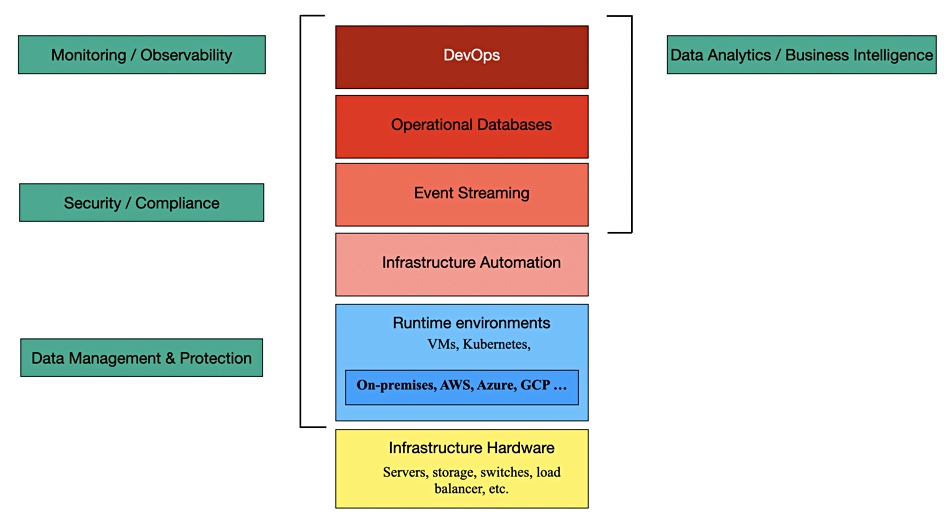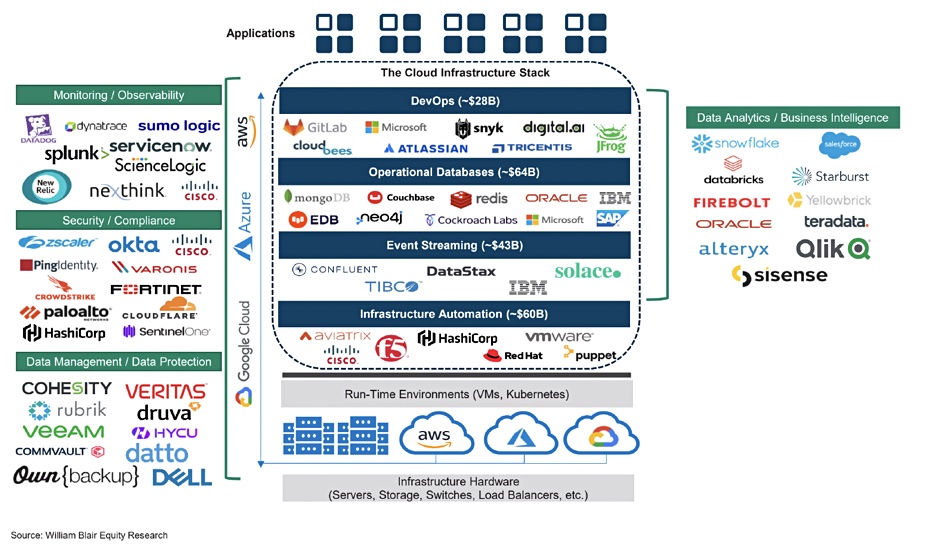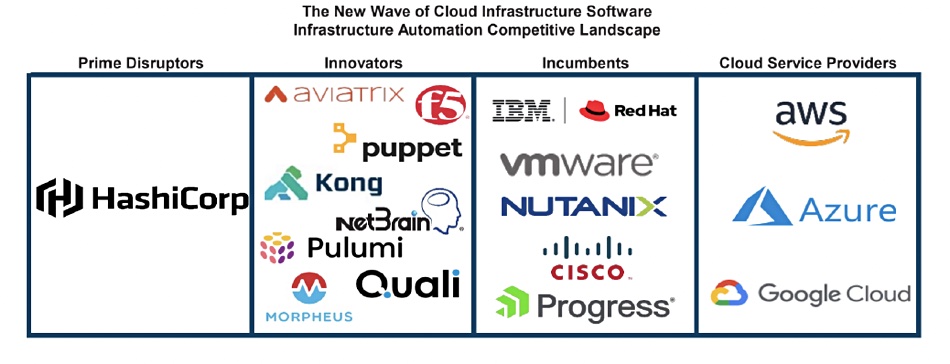The arrival, acceptance, and establishment of the public cloud has caused a whole new application system infrastructure to be erected across the clouds and on-premises datacentres so that developing and running apps as virtual machines and containers can be eased and optimised.
William Blair analyst Jason Ader has described this new cloud infrastructure stack in a mail to subscribers. It acts as a great window through which to identify and place suppliers in the cloud infrastructure landscape.
He writes: “Applications don’t live in a vacuum. Every app has a stack of technology components or layers that sits underneath … While the application stack still depends upon core infrastructure elements like compute, storage and networking, these have increasingly become commoditised.”
Hence “IT practitioner mindshare … has shifted from base infrastructure to higher layers of the stack.”
Ader identifies four key layers of this stack:
- Infrastructure automation – a middleman function between core infrastructure components and people managing them (DevOps teams, SREs, operators, cloud specialists).
- Event streaming – for moving time-stamped data (events) between producers and consumers (apps, databases, data warehouses).
- Operational databases – where app data is stored and retrieved from back-end system of record databases to front-end system of engagement ones.
- DevOps – tooling to build, test, deploy, and update custom apps at the top of the stack.

Off to the sides are complementary and necessary function areas such as as data management and protection, security and compliance, monitoring and observability, and data analytics and business intelligence. Our diagram above positions these components.
Having set up this group of stack components and layers, Ader populates them with suppliers:

He then places the suppliers in the platform layers into four categories: prime disruptors, innovators, incumbents and CSPs (Cloud Service Providers).
The prime disruptors are:
- DevOps – GitLab and GitHub (Microsoft)
- Event streaming – Confluent
- Operational database – MongoDB
- Infrastructure automation – HashiCorp
Ader says the prime disruptors “were first movers in the shift to cloud, have established themselves as thought leaders in their respective areas, and are operating at or near scale.”
Innovators have much the same vision as the prime disruptors but may lack equivalent scale, technology and/or mindshare.
Both prime disruptors and innovators generally feature product-led growth, a hybrid go-to-market model (bottom-up and top-down selling), cloud-agnostic platforms, and a fully managed SaaS offering.
Incumbents were leaders in the pre-cloud era and are working to pivot their portfolios to align to customers’ needs in a cloud-centric world.
The CSPs provide IaaS functions and have built out higher-level functions as well. They may be innovators and all provide single destination, one stop shop stacks using off-the-shelf, open-source technologies for the various layers.
Ader classifies suppliers into four groups per stack layer. Here is his infrastructure automation supplier groupings:

Event streaming supplier groupings:

Operational database supplier groupings:

DevOps supplier groupings:

Ader devised and wrote his white paper to help provide a context and guide for the investors that subscribe to William Blair services. We can piggyback on his paper and get a great insight into how the cloud infrastructure stack is constructed, which supplier fits where, and a quick rating of the suppliers. It’s a fine piece of work.








